
Bio & Chemical Sensors
A biosensor is an analytical device, used for the detection of a chemical substance, that combines a biological component with a physicochemical detector, while a chemical sensor measures and detects chemical qualities in an analyte (a chemical substance being observed) and converts the sensed chemical data into electronic data. Both areas play significant roles in healthcare diagnostics and clinical monitoring. The need for a low-cost, reliable, sensitive, and rapid detection will be the focus of our works.
Collaborator: Murni Handayani, Ph.D; Arfat Pradana, Ph.D; Dr. Mohammad Rizki Akbar, dr., M.Kes, SpJP(K)
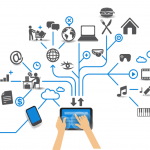
IoT Devices & App Development
The development of IoT Devices for supporting life science and medical science research is getting hits and have a huge demand. Our group focused on reversed engineering the analytical equipment to develop more affordable and targeted products.
Collaborator: Suksmandhira Harimurti, M.Eng; Henke Yunkins, M.ENg.; Robeth Viktoria Manurung, Ph.D.
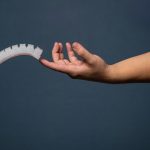
Soft Robotics
Soft robotics is inspired by how living organisms move and adapt to their surroundings. Flexibility, adaptability, and the way it responds to accomplishing tasks are the focus of this study. The research deals with the strategy to manufacture materials, develop systems, design sensors and actuators, and finally investigate basic/complex movement analysis. Our group will work together with a team from Electrical Engineering Department.
Collaborator: Egi Muhammad Idris Hidayat, Ph.D.; Yulyan Wahyu Hadi, M.T.
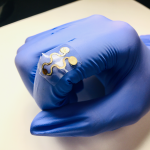
Wearable Device
Skin is the largest organ of the human body, and it offers a diagnostic interface rich with vital biological signals which can be extracted from the inner organs, blood vessels, muscles, and dermis/epidermis. Development of a soft, flexible, and stretchable electronic device will provide a novel platform to interface with soft tissues for robotic feedback and control, regenerative medicine, and continuous health monitoring.
Collaborator: Murni Handayani, Ph.D
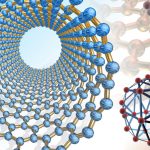
Nanomaterial for Medicine
Nanomaterials have unusual mechanical, optical, electrical and chemical behaviors, they have been widely used in medicine and pharmaceuticals for the sensitive detection of key biological molecules, more precise and safer imaging of diseased tissues, and novel forms of therapeutics. The applications of nanomaterials in medicine and pharmaceuticals have become a large subject area including nanomaterials that act as biological mimetics, nanomachines, nanofibers and polymeric nanoconstructs as biomaterials, and nanoscale microfabrication-based devices. Fundamental studies from synthesis and applications of nanomaterial will be our interest.
Collaborator: Murni Handayani, Ph.D; Prof. Brian Yuliarto, Ph.D

Microfluidic Bioplatform
A microfluidic platform allows to perform a set of fluidic unit operations that are enabled by a set of fluidic elements, which are designed for easy combination with a well-defined (and low-cost) fabrication technology. Microfluidic platforms have also been used to assist in vivo animal experiments, for blood sampling, sample preparation and analysis. The design and fabrication of microfluidics platforms for sensor integration and biological sample analysis will deeply studies in this works.
Collaborator: Akhmadi Surawijaya, M.Eng.; Narendra Kurnia Putra, Ph.D.

Bioinformatics
Bioinformatics is the application of computational technology to handle the rapidly growing repository of information related to molecular biology. Bioinformatics combines different fields of study, including computer sciences, molecular biology, biotechnology, statistics and engineering. It is particularly useful for managing and analyzing large sets of data, such as those generated by the fields of genomics and proteomics. Application of bioinformatics for drug discovery, vaccine, and protein design are several topics of interest.
Collaborator: Azza Hanif Harisna, M.Sc.; Putri Hawa Syaifie, M.Si.
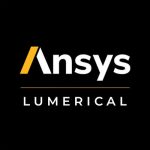
Photonic Device Simulation for Sensor Application
Device simulation is an approach which allows us to evaluate, compare and optimize alternative designs and plans to meet certain specification. Our lab has an access for Ansys Lumerical license in collaboration with other researchers in ITB. Lumerical develops photonic simulation software – tools which enable product designers to understand light, and predict how it behaves within complex structures, circuits, and systems. The topics targeted design of photonic device for bio/chemical sensor applications.
Collaborator: Arfat Pradana, Ph.D.; Akhmadi Surawijaya, M.Eng.; Dadin Mahmudin, Ph.D.
Research Topics
Below topics are currently available for undergraduate and graduate students in ITB. Students outside of ITB who are interested may join through their research advisor contacting the PI. Open topics will be limited based on the resource and grants priorities.
Our lab is open for Undergraduate students starting from the 6th semester and Graduate students (S2-S3). ITB students could register EL4093 (Professional & Community Development – 3 SKS) or EL4146 (Engineering Research – 4 SKS) before joining the projects to claim the credits at the end of the projects. Final Project topics are regularly submitted through EB4190-1 in Biomedical Engineering Department and EL4090-1 in Electrical Engineering Department. Students from other departments should discuss with research advisors from their departments regarding the administration before contacting the PI.
Our lab also encourages the students to take a fast-track program (obtaining a Master’s Degree by extending 1 year of study). Students in materials science/engineering research fields could join Master Program in Nanotechnology (S2), and students in computation/instrument research fields could join Master Program in Electrical Engineering (S2). Doctoral students may register Doctoral Program in Electrical Engineering and Informatics for computation/instrument research fields or Doctoral Program in Nanotechnology for materials science/engineering research fields.
Undergraduate Thesis (Tugas Akhir) / Master Thesis – [Updated August 28th 2023]
- 3D printed flow cell for integrating colorimetric analysis and electrochemical sensor [based on Anchel’s EB19 work]
tba
- Portable electrochemical biosensor reader [Collaboration with Dr. Roberth Manurung – BRIN Cisitu]
- Multi-node electrochemical sensor reader [Based on Reivan’s EL19 work]
- Portable electronic nose system supporting with machine learning for discriminating ammonia and ethanol gas [Collaboration with Dr. Infall Syafalni – EL ITB]
tba